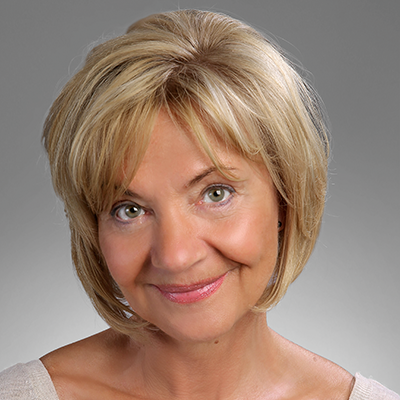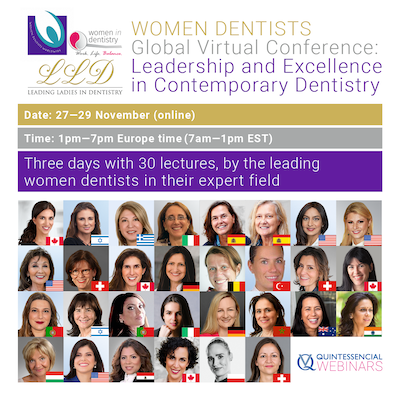International Journal of Periodontics & Restorative Dentistry, Pre-Print
DOI: 10.11607/prd.7277, PubMed ID (PMID): 3943672722. Oct 2024,Pages 1-22, Language: EnglishShakibaie, Behnam / Nava, Paolo / Calatrava, Javier / Blatz, Markus B. / Nagy, Katalin / Sabri, HamounThis prospective, preliminary controlled clinical trial investigates the comparative effectiveness of platform-switching (PS) versus traditional butt-joint or platform-matching (PM) implant-abutment connections on peri-implant crestal bone stability. Utilizing a split mouth design, 10 systemically healthy patients (n= 20 implants) had adjacent non-restorable maxillary anterior teeth replaced with two different implants (butt-joint connections and platform-switching interfaces). Patients underwent alveolar ridge preservation, followed by implant placement: platform-matching implants were inserted at crestal bone level, and platform-switching implants were placed 1mm subcrestally. Customized Zirconia crowns were then fabricated for both systems. Outcome measures included bleeding on probing (BOP), probing pocket depth (PPD), and marginal bone loss (MBL), which were evaluated through standardized periapical radiographs over 3-year timeframe. Results showed significantly higher initial MBL in the PM group (0.86 ± 0.13 mm) compared to the PS group (0.34±0.29 mm) [p value: p<0.01]. Moreover, at the three-year follow-up, the crestal bone levels remained above the implant shoulder until the third year of the study for the PS subcrestal group (PS: -0.15±0.39 mm) and slightly below the implant platform in the PM crestal group (PM: 0.55±0.19). After 3 years, the PS group also exhibited lower mean BOP percentages (12%) than the butt-joint group (17%). This study suggests that subcrestal placement with PS and internal connections can provide better long-term peri- implant bone preservation, thereby potentially improving implant success and aesthetic outcomes in the anterior maxillary region.
Keywords: dental implant, abutment, dental implant-abutment connection, platform-switching, platform-matching, implant-supported dental prostheses, marginal bone levels
International Journal of Periodontics & Restorative Dentistry, 3/2025
DOI: 10.11607/prd.7110, PubMed ID (PMID): 38727247Pages 341-355, Language: EnglishUrban, Istvan A. / Mirsky, Nicholas / Serroni, Matteo / Tovar, Nick / Vivekanand Nayak, Vasudev / Witek, Lukasz / Marin, Charles / Saleh, Muhammad H. A. / Ravidà, Andrea / Baczko, Istvan / Parkanyi, Laszlo / Nagy, Katalin / Coelho, Paulo G.Nonperforated polytetrafluoroethylene (PTFE) membranes are effectively utilized in guided bone regeneration (GBR) but may hinder cell migration due to limited interaction with the periosteum. This study compared bone regeneration using occlusive or perforated membranes combined with acellular collagen sponge (ACS) and recombinant human bone morphogenetic protein-2 (rhBMP-2) in a canine mandibular model. Male Beagle dogs (n = 3) received two mandibular defects each to compare ACS/rhBMP-2 with experimental (perforated group) and control (nonperforated group) membranes (n = 3 defects/group). Tissue healing was assessed histomorphologically, histomorphometrically, and through volumetric reconstruction using microcomputed tomography. The perforated group showed increased bone formation and reduced soft tissue formation compared to the nonperforated group. For the primary outcome, histomorphometric analysis revealed significantly greater total regenerated bone in the perforated group (67.08% ± 6.86%) than the nonperforated group (25.18% ± 22.44%) (P = .036). Perforated membranes had less soft tissue infiltration (32.91% ± 6.86%) than nonperforated membranes (74.82% ± 22.44%) (P = .036). The increased permeability of membranes in the perforated group potentially enabled periosteal precursor cells to have greater access to rhBMP-2. The availability may have accelerated their differentiation into mature bone-forming cells, contributing to the stimulation of new bone production relative to the nonperforated group.
Keywords: bone regeneration, implants, osteogenesis, periosteum, polytetrafluoroethylene
Quintessence International, 8/2023
DOI: 10.3290/j.qi.b4007601, PubMed ID (PMID): 37010441Pages 622-628, Language: EnglishChackartchi, Tali / Imber, Jean-Claude / Stähli, Alexandra / Bosshardt, Dieter / Sacks, Hagit / Nagy, Katalin / Sculean, AntonObjective: To histologically evaluate the effects of a novel human recombinant amelogenin (rAmelX) on periodontal wound healing/regeneration in intrabony defects.
Method and materials: Intrabony defects were surgically created in the mandible of three minipigs. Twelve defects were randomly treated with either rAmelX and carrier (test group) or with the carrier only (control group). At 3 months following reconstructive surgery, the animals were euthanized, and the tissues histologically processed. Thereafter, descriptive histology, histometry, and statistical analyses were performed.
Results: Postoperative clinical healing was uneventful. At the defect level, no adverse reactions (eg, suppuration, abscess formation, unusual inflammatory reaction) were observed with a good biocompatibility of the tested products. The test group yielded higher values for new cementum formation (4.81 ± 1.17 mm) compared to the control group (4.39 ± 1.71 mm) without reaching statistical significance (P = .937). Moreover, regrowth of new bone was greater in the test compared to the control group (3.51 mm and 2.97 mm, respectively, P = .309).
Conclusions: The present results provided for the first-time histologic evidence for periodontal regeneration following the use of rAmelX in intrabony defects, thus pointing to the potential of this novel recombinant amelogenin as a possible alternative to regenerative materials from animal origins.
Keywords: amelogenin, enamel matrix derivative, intrabony defects, periodontal regeneration, recombinant, wound healing
QZ - Quintessenz Zahntechnik, 8/2022
KurzfassungPages 802-803, Language: GermanLerner, Henriette / Nagy, Katalin / Luongo, Fabrizia / Luongo, Giuseppe / Admakin, Oleg / Mangano, Francesco GuidoEine vergleichende StudieThe International Journal of Prosthodontics, 5/2021
DOI: 10.11607/ijp.7379Pages 591-599, Language: EnglishLerner, Henriette / Nagy, Katalin / Luongo, Fabrizia / Luongo, Giuseppe / Admakin, Oleg / Mangano, Francesco GuidoPurpose: To investigate and compare the production tolerances of six different commercially available implant scan bodies (SBs), with the null hypothesis that there would be no tolerances or significant differences between the different SBs.
Materials and Methods: Six different implant SBs (IO 6A-B and IO 2B-B, Nobel Biocare; RC 4.1 mm 025.4915 and RN 4.8 mm 048.168, Straumann; KR 352KR1A0, BTK Dental Implants; and AANISR4013T, MegaGen) were evaluated. Five specimens of each SB type (total N = 30 samples) were screwed onto the corresponding implant analogs and underwent dimensional analysis with optical microscopy (QVI Smartscope Flash 200, Optical Gaging Products) and precision probing (R 0.25, Renishaw). The outcome variables were SB height, diameter, and angle of the flat face on the top (plane). All measurements were compared to the corresponding computer-assisted design library measurements as a reference to assess the tolerances. Statistical analyses were performed to compare the results obtained with the different SBs.
Results: Tolerances in the manufacturing of the SBs were reported in height, diameter, and plane measurements, and statistically significant differences between the different types of SBs were found. Therefore, the null hypothesis was rejected. Most of the deviations and tolerances were reported in height measurements with conical connection implants.
Conclusions: Production tolerances and statistically significant differences were found among the six commercially available SBs evaluated in this study. Additional studies with larger sample sizes and other types of SBs are needed.
International Journal of Esthetic Dentistry (DE), 2/2020
Pages 216-230, Language: GermanGluckman, Howard / Du Toit, Jonathan / Salama, Maurice / Nagy, Katalin / Dard, MichelSeit der Einführung der Socket-Shield-Technik durch Hürzeler und Mitarbeiter sind 10 Jahre vergangen. Seitdem hat sich viel weiterentwickelt bei dieser partiellen Extraktionstherapie, bei der die eigene Zahnwurzel des Patienten zum Erhalt des Parodonts und periimplantären Gewebes eingesetzt wird. Im vorliegenden Artikel werden Spezifikationen, Arbeitsschritte, Instrumente und Verfahren diskutiert, die das Ergebnis umfangreicher Erfahrungen bei der Verfeinerung der Socket-Shield-Technik sind, wie wir sie heute kennen. Ein zuverlässiges und reproduzierbares Protokoll ist eine zwingende Voraussetzung für den Ersatz eines Zahns in der ästhetischen Zahnmedizin. Zudem hilft das standardisierte Protokoll dabei, prozedural konsistente Daten zu dieser Technik zu publizieren. Erläutert wird ein reproduzierbares Schritt-für-Schritt-Protokoll für die Socket-Shield-Technik bei einer Sofortimplantation mit Sofortprovisorium als Ersatz für einwurzelige Zähne.
International Journal of Esthetic Dentistry (EN), 2/2020
PubMed ID (PMID): 32467949Pages 212-225, Language: EnglishGluckman, Howard / Du Toit, Jonathan / Salama, Maurice / Nagy, Katalin / Dard, MichelTen years have passed since Hürzeler and coworkers first introduced the socket-shield technique. Much has developed and evolved with regard to partial extraction therapy, a collective concept of utilizing the patient's own tooth root to preserve the periodontium and peri-implant tissue. The specifications, steps, instrumentation, and procedures discussed in this article are the result of extensive experience in refining the socket-shield technique as we know it today. A repeatable, predictable protocol is requisite to providing tooth replacement in esthetic dentistry. Moreover, a standardized protocol provides a better framework for clinicians to report data relating to the technique with procedural consistency. This article aims to illustrate a reproducible, step-by-step protocol for the socket-shield technique at immediate implant placement and provisionalization for single-rooted teeth.
International Journal of Periodontics & Restorative Dentistry, 1/2019
DOI: 10.11607/prd.3921, PubMed ID (PMID): 30543721Pages 8-14, Language: EnglishUrban, Istvan A. / Nagy, Katalin / Werner, Sabine / Meyer, MichaelPredictable and effective surgical techniques that aim to increase the width of keratinized gingiva, relocate the mucogingival junction, and deepen the vestibule often involve soft tissue autografts; however, soft tissue autograft supply is limited and its harvesting is associated with patient morbidity. With a strip autograft and xenogeneic collagen matrix (XCM) technique combination, autograft harvest requirements and patient morbidity are reduced. In this histologic evaluation, 12 strip autograft/XCM biopsy samples were compared with 3 reference samples of palatal strip autografts. Tissue morphology, keratin, and collagen expression appear identical, indicating that the combined grafting technique provides desired and physiologically normal keratinized gingiva.
International Journal of Periodontics & Restorative Dentistry, 3/2015
DOI: 10.11607/prd.2287, PubMed ID (PMID): 25909521Pages 344-353, Language: EnglishUrban, Istvan A. / Lozada, Jaime L. / Nagy, Katalin / Sanz, MarianoLarge areas of mucogingival alterations may result from advanced regenerative procedures. This prospective case series study was performed to introduce and evaluate a surgical approach that combines the strip gingival graft technique with the use of a xenogeneic collagen matrix. The primary outcome measurement was the increase in keratinized tissue width from baseline to 12 months postprocedure. Twenty patients were enrolled, and they all completed the 12-month evaluation. All treated sites exhibited a significant gain in keratinized tissue at 12 months, with a mean width of 6.33 mm (SD: 2.16), while there was a 43% contraction of the grafted area at 6 months. Tissue dimensions remained stable between 6 and 12 months. The use of the combination graft was well accepted by the patients, with minimal morbidity according to the patients' low self-reported pain and the low utilization of pain medication.
Implantologie, 2/2014
Pages 171-181, Language: GermanUrban, Istvan A. / Lozada, Jaime L. / Jovanovic, Sascha A. / Nagursky, Heiner / Nagy, KatalinEine prospektive Fallserie an 19 PatientenZiel: Diese prospektive Fallserie evaluierte die Verwendung einer neuen nichtresorbierbaren titanverstärkten Membran (hochdichtes Polytetrafluorethylen) in Kombination mit einer Mischung aus anorganischem Knochenmineral boviner Herkunft (anorganic bovine bone-derived mineral, ABBM) und partikuliertem autogenem Knochen für die vertikale Augmentation von defizienten Alveolarkämmen. Material und Methode: Die vertikale Kammaugmentation erfolgte mit einer Mischung aus ABBM und partikuliertem autogenem Knochen, die mit einer neuen nichtresorbierbaren titanverstärkten Membran abgedeckt wurde. Vor und nach dem Eingriff wurden Messungen der Kammhöhe durchgeführt; Komplikationen wurden aufgezeichnet; zur histologischen Bewertung wurden Biopsieproben entnommen. Ergebnisse: An 19 Patienten wurden 20 vertikale Kammaugmentationen durchgeführt. In allen behandelten Defekten zeigte sich eine hervorragende Knochenbildung mit einem durchschnittlichen Knochengewinn von 5,45 mm (Standardabweichung: 1,93 mm). Die Heilungsphase verlief ereignislos; Komplikationen wurden nicht beobachtet. 8 Proben wurden histologisch untersucht: Im Durchschnitt bestanden die Proben zu 36,6 % aus autogenem oder regeneriertem Knochen, zu 16,6 % aus ABBM und zu 46,8 % aus Markräumen. An den Proben waren weder Entzündungs- noch Fremdkörperreaktionen zu beobachten. Schlussfolgerung: Die Behandlung vertikaler Alveolarkammdefekte mittels gesteuerter Knochenregeneration unter Verwendung einer Mischung aus autogenem Knochen und ABBM sowie einer neuen nichtresorbierbaren titanverstärkten Membran darf als erfolgreich gelten.
Keywords: bovines anorganisches Knochenmineral, Fallserie, gesteuerte Knochenregeneration, nichtresorbierbare Membran, vertikale Augmentation





